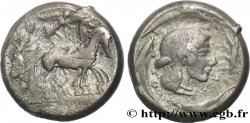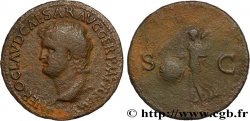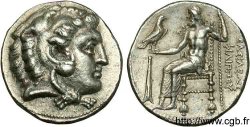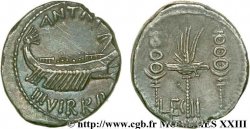v18_0032 - SICILY - SYRACUSE Tétradrachme
MONNAIES 18 (2003)
Starting price : 2 500.00 €
Estimate : 3 800.00 €
Realised price : 5 293.00 €
Number of bids : 10
Maximum bid : 5 600.00 €
Starting price : 2 500.00 €
Estimate : 3 800.00 €
Realised price : 5 293.00 €
Number of bids : 10
Maximum bid : 5 600.00 €
Type : Tétradrachme
Date: c. 475-470 AC.
Mint name / Town : Syracusa
Metal : silver
Diameter : 26 mm
Orientation dies : 3 h.
Weight : 17,43 g.
Rarity : R2
Emission: groupe 3, série 12a
Coments on the condition:
Flan large et complet des deux côtés. Exemplaire de qualité exceptionnelle avec une extraordinaire patine de médaillier à reflets bleutés et mordorés. Portrait magnifique avec une expression vivante. Au droit, le bige semble se mouvoir dans le champ
Catalogue references :
Predigree :
Cet exemplaire provient de la collection Weber, L. Forrer, The Weber collection of Greek coins, Londres 1922, n° 1564
Obverse
Obverse legend : ANÉPIGRAPHE.
Obverse description : Bige au pas à droite, conduit par un aurige tenant les rênes et le kentron ; le bige est couronné par Niké volant à droite.
Reverse
Reverse legend : N RÉTROGRADE.
Reverse description : Tête d'Aréthuse à droite, les cheveux relevés et retenus par un diadème de perles, entourée de quatre dauphins.
Reverse legend : SUR-AK-OSI-ON
Commentary
Poids lourd. Le style est caractéristique et l’exemplaire très bien gravé avec beaucoup de finesse. Mêmes coins que l’exemplaire du trésor de Randazzo (n° 462) et que celui de la collection de l’American Numismatic Society (n° 97).








 Report a mistake
Report a mistake Print the page
Print the page Share my selection
Share my selection Ask a question
Ask a question Consign / sell
Consign / sell
 Full data
Full data















